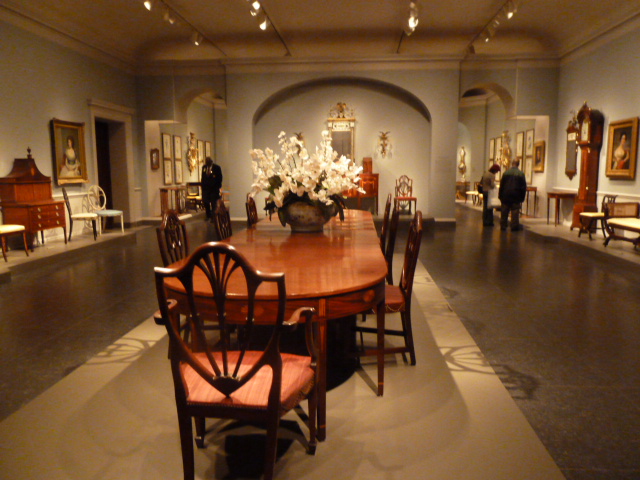Recently, I met writer pals Diane Gaston and Julie Halperson at the National Gallery of Art in Washington D.C. We had a lot of catching up to do, but we also managed to view some outstanding art. We saw the exhibition "Pre-Raphaelites: Victorian Art and Design," which was organized by the NGA and the Tate Britain. It is showing until May, 2013, so if you have a chance to get to Washington, don't miss it -- a blog piece is coming soon..
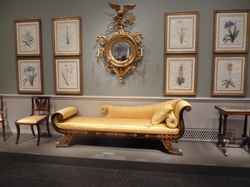
The Federal Period in American history corresponds roughly to the extended regency, from about 1789 when the Constitution was adopted to 1828 or so, when Andrew Jackson was elected as the seventh president -- the first who was not associated with the Revolution and a founding father, though in John Quincy Adam's case, he was the son of a founding father.
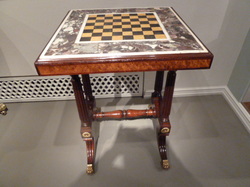
The Gaming table is possibly by Thomas Seymour (1771-1848), Boston, 1815-1820, mahogany and mahogany veneers, various marbles, ormolu (gilded brass), leather and baize (woven cloth). Early America had some superb craftsman who turned out furniture that rivaled the best from England and the continent.
Linda H. Kaufman and her late husband, George M., collected American furniture and paintings for many years, promising the collection to the National Gallery as their first permanent display of federal period furniture.
Linda H. Kaufman and her late husband, George M., collected American furniture and paintings for many years, promising the collection to the National Gallery as their first permanent display of federal period furniture.
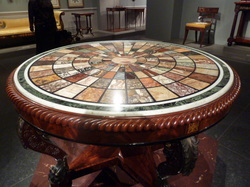
The Center Table has a frame made by Anthony Querville (1789-1856) a former Frenchman, in Philadelphia 1827-1830. The frame is made of mahogany and mahogany veneers, brass and gold leaf with a top imported from Italy made of various marbles and semi-precious stones.
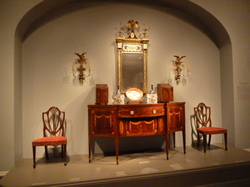
The sideboard was made and labeled by William Mills and Simeon Deming (active 1793-1798), New York; mahogany with mahogany, satinwood, and curly maple veneers and light wood inlays; brass. This sideboard was once owned by Oliver Woolcott jr. (1760-1835), Comptroller and Secretary of the Treasury under George Washington. The looking glass was made in New York 1790-1815 of white pine, iron wire, gesso and gold leaf, glass and paint. The platter is from China, 1800-1820, of hard paste porcelain. A pair of decanters was made in Bristol, England, 1800-1810, of blue glass with gilt. The pair of wine coolers is Chinese, 1720-1740, of hard paste porcelain. The two knife boxes are American, 1785-1895, of mahogany and mahogany veneers with wood inlay and silver. The side chairs are from New York, 1775-1899, of mahogany.
The dining table below is attributed to John Townsend, of Newport, RI; It is a three-part table, 1795-1899, mahogany and light wood inlay, 71x436 inches.
